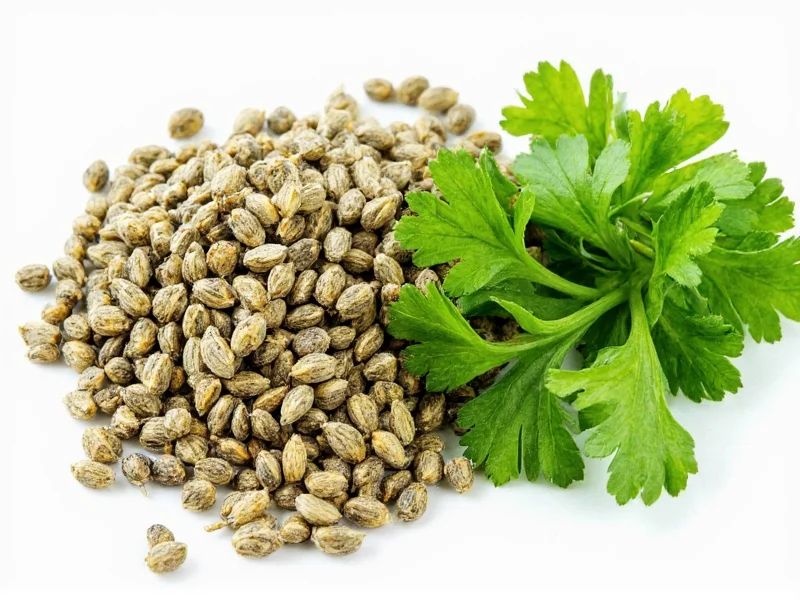Running out of dried cilantro mid-recipe doesn't have to ruin your dish. Understanding the unique flavor profile of dried cilantro—which loses the bright citrus notes of fresh but retains earthy, slightly peppery characteristics—helps you select the most appropriate replacement. Unlike fresh cilantro that offers vibrant top notes, dried cilantro provides subtle background flavor that integrates well during cooking.
Understanding Dried Cilantro's Flavor Profile
Dried cilantro undergoes significant flavor transformation during the dehydration process. The volatile compounds responsible for fresh cilantro's distinctive citrus aroma evaporate, leaving behind more earthy, herbal notes with subtle peppery undertones. This makes dried cilantro function differently in recipes than its fresh counterpart—it's primarily used as a background flavor rather than a finishing herb.
Top Substitutes for Dried Cilantro
Choosing the right substitute depends on whether you're making Mexican, Indian, or Middle Eastern cuisine, and whether your recipe requires the herb early in cooking or as a garnish. Here are the most effective alternatives:
| Substitute | Ratio to Replace 1 Tbsp Dried Cilantro | Best For | Flavor Notes |
|---|---|---|---|
| Fresh cilantro | 3 Tbsp chopped | Garnishing, salsas, fresh dishes | Brighter, more citrusy flavor |
| Ground coriander | 1.5 tsp | Curries, stews, spice rubs | Earthy, warm, lemony notes |
| Parsley + cumin blend | 2 Tbsp parsley + 1/4 tsp cumin | Soups, chili, bean dishes | Herbal base with earthy depth |
| Dried Mexican oregano | 1.5 tsp | Mexican dishes, enchilada sauces | More robust, slightly citrusy |
Fresh Cilantro as a Dried Cilantro Replacement
When substituting fresh cilantro for dried cilantro, remember the 3:1 ratio—use three times the amount of fresh herb. This accounts for the moisture content and more intense flavor of fresh leaves. For best results in cooked dishes, add fresh cilantro during the last 5-10 minutes of cooking to preserve its flavor. The best substitute for dried cilantro in recipes requiring fresh presentation is simply using fresh cilantro as a garnish rather than incorporating it during cooking.
Ground Coriander: The Closest Flavor Match
Ground coriander (made from cilantro seeds) provides the most similar flavor profile to dried cilantro leaves, though it's more citrusy and less grassy. Use 1.5 teaspoons of ground coriander to replace 1 tablespoon of dried cilantro. This substitution works particularly well in Indian curries, Middle Eastern dishes, and spice blends where the earthy notes of dried cilantro would normally feature. Understanding dried cilantro replacement options reveals that coriander often outperforms other herbs in cooked applications.
Herb Blends for Balanced Flavor
When you need a substitute for dried cilantro in soups, stews, or chili, a combination of flat-leaf parsley and cumin creates a surprisingly effective alternative. Use 2 tablespoons of finely chopped parsley mixed with 1/4 teaspoon of ground cumin to replace 1 tablespoon of dried cilantro. The parsley provides the herbal base while the cumin adds the earthy depth that dried cilantro contributes. This ratio for fresh cilantro to dried cilantro substitution works well when you need a more complex flavor profile than single-herb alternatives provide.
Cuisine-Specific Substitution Guide
The ideal dried cilantro alternative varies significantly by cuisine:
- Mexican cooking: Use Mexican oregano (1.5 tsp per tbsp dried cilantro) or a parsley-cumin blend. Avoid regular oregano which has a completely different flavor profile.
- Indian recipes: Ground coriander is the best substitute for dried cilantro in curry dishes, using a 1.5:1 ratio (teaspoons ground coriander to tablespoons dried cilantro).
- Middle Eastern dishes: Try a mix of mint and parsley with a pinch of sumac for tanginess.
- General cooking: For most Western recipes, the parsley-cumin blend provides the most versatile dried cilantro replacement options.
What NOT to Use as a Substitute
Certain common substitutions create disappointing results. Avoid using:
- Regular oregano - Has a completely different flavor profile (more pungent and less citrusy)
- Dried parsley alone - Lacks the earthy depth of dried cilantro
- Cilantro stems - Too fibrous and lack concentrated flavor when dried
- Curry powder - Overpowers with multiple spices rather than providing a single herb note
Many people mistakenly believe that dried cilantro and coriander are interchangeable, but they come from different parts of the plant (leaves vs seeds) and have distinct flavor profiles. Understanding this difference is crucial when selecting the right dried cilantro alternative for your specific recipe.
Preserving Fresh Cilantro for Future Use
Rather than constantly searching for a substitute for dried cilantro, consider proper storage techniques to extend fresh cilantro's shelf life:
- Store stems in a glass of water (like flowers) with a plastic bag loosely covering the leaves
- Freeze chopped cilantro in olive oil in ice cube trays for ready-to-use portions
- Dry cilantro properly by hanging bunches upside down in a dark, well-ventilated space
- Make cilantro pesto and freeze in portions for future cooking needs
Properly stored, dried cilantro maintains its flavor for 1-2 years when kept in an airtight container away from light and heat. This makes having a small supply on hand worthwhile for frequent cooks of Mexican, Indian, or Southeast Asian cuisine.
Final Substitution Tips
When selecting what can I use instead of dried cilantro, consider these professional chef tips:
- For acidic dishes (like tomato-based sauces), reduce the substitute amount by 25% as acid intensifies herbal flavors
- Add substitutes gradually and taste as you cook—you can always add more but can't remove excess
- For the most authentic Mexican flavor profile, combine Mexican oregano with a touch of ground cumin
- When using ground coriander as a dried cilantro replacement, toast the seeds lightly before grinding for enhanced flavor











 浙公网安备
33010002000092号
浙公网安备
33010002000092号 浙B2-20120091-4
浙B2-20120091-4